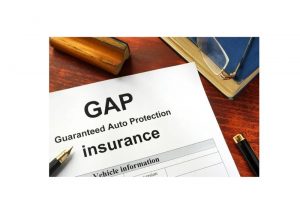12 Key Reasons for Considering Gap Insurance in Maryland Following a Car Accident
When purchasing a new car, you’re likely to be offered gap insurance. This form of coverage is vital due to immediate depreciation which hits your vehicle as soon as you drive off the dealership lot.
In the first year, new vehicles lose approximately 30% of their value, and a further 20% in the second year. Without gap insurance, you can quickly find yourself upside down on your loan. Here are 12 reasons why you should consider gap insurance.
Gap Insurance and Car Depreciation
- Immediate Depreciation: Once you sign the papers, your car transitions from being a ‘new’ car to a ‘used’ automobile. This change depreciates the value of your vehicle considerably.
- Covering the Gap: If your vehicle is damaged or stolen within the first few years, you could owe more than your car is worth. Gap insurance covers the difference between what your car is worth and what you still owe.
How Gap Insurance Works
- Total Loss Coverage: Gap insurance is used in the event of a total loss from a covered accident or theft. It’s not applicable for mechanical repairs.
- Actual Cash Value (ACV): This is the monetary value of your car at the time of an accident, not its original price. Gap insurance covers the difference between your car’s ACV and what you owe on your loan.
Practical Gap Insurance Example
- Example: Imagine you’re in a covered accident, not at fault, and your car is beyond repair. You owe $15,000 on your auto loan, but your car’s ACV is only $11,000. Gap insurance would cover the $4,000 difference, after your deductible.
The Finer Details of Gap Insurance
- Refunds: Gap insurance is typically paid upfront. You’re eligible for a refund if you sell or refinance your vehicle.
- Deductible Costs: Gap insurance does not cover deductible costs. You must pay your deductible even if an accident is covered by your gap insurance policy.
When Gap Insurance Becomes Necessary
- Low Down Payment or None: If you’ve made little or no down payment, you might owe more than your car’s worth.
- Upside-Down Trade-In: If you’ve traded in an upside-down car and added the amount you still owe to your new car loan, gap insurance can be beneficial in case of a total loss.
- Long-Term Financing: If you have financed for 60 months or longer, or leased the vehicle (where gap insurance is generally required).
- Rapidly Depreciating Vehicle: If your purchased vehicle depreciates faster than average, or if it doesn’t have a great resale value.
- High Mileage and Interest Rate: If you plan to pile on the miles quickly or have high-interest rate loans, gap insurance is a smart investment.
Canceling Gap Insurance
You can cancel your gap insurance when you’re no longer “upside down” on your loan – when you owe less than your car’s worth. Monitor your car’s changes in value and your decreasing loan balance to determine this point.
Conclusion
Gap insurance provides valuable protection for new car owners, especially those with significant loans or those who anticipate rapid depreciation. If you’ve recently been in a car accident or if your car has been stolen, contacting a car accident lawyer or auto accident attorney can also help you navigate through the claims process efficiently.
Case Study: The Crucial Role of Gap Insurance in Auto Financing
Background:
John is a resident of Maryland who recently purchased a new car. He was excited about the purchase but hadn’t given much thought to gap insurance. A car enthusiast, John chose a car model known for depreciating faster than average. Given his daily long-distance commuting needs, the car would pile up miles quickly, further accelerating depreciation. John financed his car with a five-year auto loan and made a small down payment.
The Incident:
About a year and a half into his car ownership, John was involved in a severe car accident. He was not at fault, but his car was damaged beyond repair and was declared a total loss.
The Aftermath:
John’s auto insurance assessed the Actual Cash Value (ACV) of his car at the time of the accident and decided to pay out $15,000, which reflected the car’s value considering its high mileage and rapid depreciation. However, John still owed $19,000 on his auto loan. Without gap insurance, John was left to pay the $4,000 difference out of pocket.
Outcome:
Facing this financial burden and unsure of how to navigate the situation, John sought advice from an auto accident attorney. The attorney explained that if John had opted for gap insurance at the time of his car purchase, it could have covered the $4,000 difference between the ACV and the remaining loan amount, minus the deductible.
Conclusion:
John’s case serves as a crucial reminder of the importance of gap insurance, particularly for new car owners who finance their car purchases, anticipate high mileage, or choose cars known for rapid depreciation. Although he was responsible with his regular car insurance, John found himself in a financial predicament due to the gap between his car’s ACV and his outstanding loan. Gap insurance could have prevented this and saved John from significant out-of-pocket expense.
For individuals in similar situations, it’s advised to consult with a car accident lawyer to understand all options available and to seek guidance in navigating auto financing and insurance claims effectively.
In the case study, we’ve illustrated the importance of gap insurance using a real-world example, which should help to convey its value in certain circumstances.




